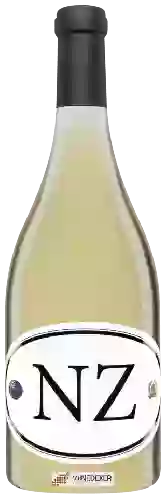
Winery LocationsNZ (New Zealand)
In the mouth this white wine is a with a nice freshness.
This wine generally goes well with vegetarian, shellfish or goat cheese.
Taste structure of the NZ (New Zealand) from the Winery Locations
Light | Bold | |
Dry | Sweet | |
Soft | Acidic |
In the mouth the NZ (New Zealand) of Winery Locations in the region of South Island is a with a nice freshness.
Wine flavors and olphactive analysis
On the nose the NZ (New Zealand) of Winery Locations in the region of South Island often reveals types of flavors of pineapple, microbio or gooseberry and sometimes also flavors of fresh cut grass, guava or mango.
Food and wine pairings with NZ (New Zealand)
Pairings that work perfectly with NZ (New Zealand)
Original food and wine pairings with NZ (New Zealand)
The NZ (New Zealand) of Winery Locations matches generally quite well with dishes of shellfish, vegetarian or goat cheese such as recipes of scallops or scallops express with cognac, summer tuna quiche or cannelloni with vegetables.
Details and technical informations about Winery Locations's NZ (New Zealand).
Discover the grape variety: Muresconu
Muresconu noir is a grape variety that originated in France (Corsica). It produces a variety of grape especially used for the elaboration of wine. It is rare to find this grape to eat on our tables. Muresconu noir can be found in several vineyards: South-West, Cognac, Bordeaux, Provence & Corsica, Rhone Valley, Loire Valley, Savoie & Bugey, Beaujolais.
Last vintages of this wine
The best vintages of NZ (New Zealand) from Winery Locations are 2017, 2016, 2018
Informations about the Winery Locations
The Winery Locations is one of of the world's greatest estates. It offers 14 wines for sale in the of South Island to come and discover on site or to buy online.
The wine region of South Island
Central Otago, near the bottom of New Zealand's South Island, vies for the title of world's most southerly wine region. Vineyards cling to the sides of mountains and high above river gorges in this dramatic landscape. Pinot Noir has proven itself in this challenging Terroir, and takes up nearly three-quarters of the region's vineyard area. The typical Central Otago Pinot Noir is intense and deeply colored, with flavors of doris plum, Sweet spice and bramble.
News related to this wine
The Morey Saint Denis appellation investigated through its geology and geography
The Bourgogne Wine Board (BIVB) invites you to enjoy this video in which Jean-Pierre Renard, Expert Instructor at the Ecole des Vins de Bourgogne, explains the topographical and geological characteristics of the Morey-Saint-Denis appellation. The vineyard lies on an intensely fractured area. Several characteristic zones can be distinguished, we can say that each Climat has its own personality. This video is taken from the “Rendez-vous avec les vins de Bourgogne” program broadcasted in April 2021 ...
Chablis wines with Joe Fattorini in The Wine Show @Home
In this first episode of a series dedicated to Chablis wines on @The Wine Show @Home, wine expert and TV host Joe Fattorini introduces the vineyards and the wines of Chablis through a tasting of three wines: a Petit Chablis, a Chablis and a Chablis Premier Cru. #PureChablis #BourgogneWines #Chablis ...
At the heart of the terroirs of Mâcon-Cruzille
Sequence from the video « At the heart of the Mâcon terroir » which offer a stroll at the heart of the Mâcon terroir. It offers a focus on Mâcon-Cruzille, one of the 27 geographical denominations of the Mâcon appellation. Travel through the terroirs of the Mâcon appellation by watching the full video : https://www.youtube.com/watch?v=GF20y1aBZh8 Both are available in French and English. Our social media: Facebook: https://www.facebook.com/BourgogneWines Twitter: https://twitter.com/BourgogneWi ...
The word of the wine: Malolactic fermentation
Called second fermentation or malo for short. It is the degradation (under the effect of bacteria) of the malic acid naturally present in the wine into milder, less aggressive lactic acid. Some producers or wineries refuse this operation by "blocking the malo" (by cold and adding SO2) to keep a maximum of acidity which carries the aromas and accentuates the sensation of freshness.














